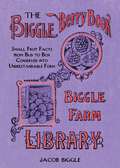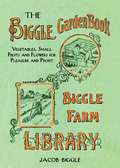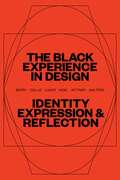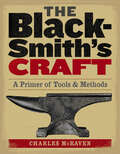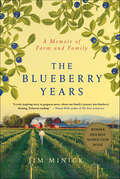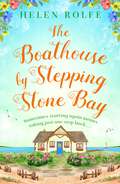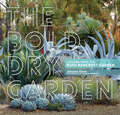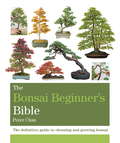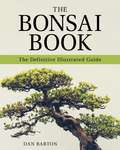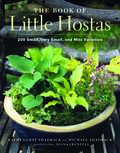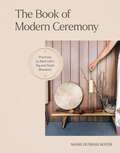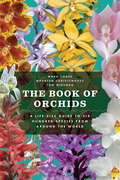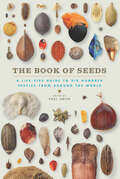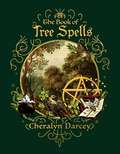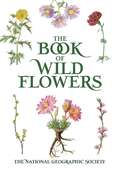- Table View
- List View
The Biggle Berry Book: Small Fruit Facts from Bud to Box Conserved into Understandable Form
by Jacob Biggle"The only just and true way for an honorable and manly man is to grow them, and let everybody about the place have all he can eat. For the berry comes from the garden to the table in tempting and presentable shape, fit to grace the table of a king," writes Jacob Biggle in The Biggle Berry Book, which was first published in 1894. If you hate plunking down what seems like a king's ransom every time you buy a quart of berries at the local farmer's market, and if you've got a little land to spare, it might be time to grow your own.Jacob Biggle shows just how easy it is to raise your own nutrient-rich berries. While the book's emphasis is on more common fruit such as strawberries, raspberries, blackberries, currants, gooseberries, and grapes, there is also information from other berry growers living in all parts of America who raised less familiar varieties such as dewberries, juneberries, loganberries, mulberries, and mayberries. Biggle's trusty manual contains advice on, among other things:How to keep your berry patch pruned, cleaned, cultivated, and in good orderHow to protect your plants from fungus and insect damageThe best ways to pick, pack, and market your berries, if you're willing to part with them,Enhanced with color plates, beautiful engravings, and vintage photographs, The Biggle Berry Book is a treasure for anyone who appreciates the taste and freshness of homegrown fruit.
The Biggle Garden Book: Vegetables, Small Fruits and Flowers for Pleasure and Profit (Gardening In America Ser.)
by Jacob BiggleWhen The Biggle Garden Book was first published in 1908, most people were in the habit of raising their own food and flowers. Jacob Biggle felt that a gardener's success had to do with willpower and passion rather than acreage. "The man, woman or youngster who really wants a garden, will somehow manage to have a good one regardless of soil conditions, bad weather, measles in the family, or whether the area of ground at hand is a square acre or a square rod," he wrote encouragingly at the start of the book.That passion for gardening continues today in fields, backyards, and urban community plots across the United States. According to a poll taken in 2009 by the National Gardening Association, more than forty-three million households in the United States grow some of their own food. Learn how to do things the "old-school" way as Jacob and Harriet Biggle guide you through the fundamentals of:Soil preparation, sowing, and plantingHotbeds and cold framesFertilization, cultivation, and irrigationFlower gardening with old-fashioned favoritesGarden pests and friendsWith a resurgence in organic farming, heirloom varieties, and self-reliant living, The Biggle Garden Book is more valuable than ever because of the time-tested advice it offers.
The Biggle Orchard Book: Fruit and Orchard Gleanings from Bough to Basket, Gathered and Packed into Book Form (Gardening In America Ser.)
by Jacob Biggle"The first thing to do about starting an orchard is to plan for it," Jacob Biggle, the author of this handy little book, advises. "Put on your thinking-cap, study into the matter, and do not jump in the dark. A slow start is much better than a poor start. Harriet says that an orchard set in the right place, at the right time and of the right varieties, is worth just eleven times more than a hit-or-miss orchard. Where she secured the data for such exact figures, I do not know; but I am willing to admit that she is about right in this statement."Once you've followed Harriet's advice and determined the site for your orchard, the next task is to decide what kinds of trees to plant in it and learn how to care for them season after season. The Biggle Orchard Book includes everything you need to know about nearly every fruit tree under the sun, and also those that produce nuts. It includes instructions on:How to prune newly set treesWhen to pick fruitHow to pack fruit for the farmer's marketAnd much more!Written for backyard farmers, especially those interested in timeless orcharding techniques, The Biggle Orchard Book is an essential and charming addition to the home library.
The Biochar Handbook: A Practical Guide to Making and Using Bioactivated Charcoal
by Kelpie WilsonWith extensive research, real-world examples, and hands-on applications, this go-to guide offers a comprehensive look at the principles and practices of biochar—and all of its world-changing uses.Like many human discoveries, biochar has likely been invented, lost, and reinvented multiple times. It can be found in the rich terra preta soils of the Amazon and in the ancient &“dark earths&” dotting Africa, Asia, and Europe. However, biochar isn&’t just an archeological curiosity. In The Biochar Handbook, author Kelpie Wilson argues that the simple process of burning organic material in a low-oxygen, low-emission environment could be one of the most powerful tools we have to restore degraded soils and reduce our dependence on fossil fuels.In accessible and authoritative prose, Wilson demonstrates that biochar is a low-tech but effective means of reducing wildfire risks, restoring soil carbon, managing manure, weaning farms off of toxic inputs, and producing the best compost ever made.In this book, you&’ll also find:A pocket history of biocharStep-by-step instructions on making biochar for yourselfApplications for soil water retention, pest deterrence, compost enhancement, and moreInspiring examples of ecosystem restoration and improved forest managementLow-cost recipes, including Cultured Biochar and Sustainable Potting SoilWilson makes a compelling case that biochar is both simple to make and a potent solution to a host of knotty problems, both global and close to home. Whether you&’re a gardener, homesteader, rancher, commercial farmer, permaculturalist, or forest manager, this book will show you how to put biochar to work, making you and your community more resilient as a result.
The Black Experience in Design: Identity, Expression & Reflection
by Anne H. BerryThe Black Experience in Design spotlights teaching practices, research, stories, and conversations from a Black/African diasporic lens. Excluded from traditional design history and educational canons that heavily favor European modernist influences, the work and experiences of Black designers have been systematically overlooked in the profession for decades. However, given the national focus on diversity, equity, and inclusion in the aftermath of the nationwide Black Lives Matter protests in the United States, educators, practitioners, and students now have the opportunity—as well as the social and political momentum—to make long-term, systemic changes in design education, research, and practice, reclaiming the contributions of Black designers in the process.The Black Experience in Design, an anthology centering a range of perspectives, spotlights teaching practices, research, stories, and conversations from a Black/African diasporic lens. Through the voices represented, this text exemplifies the inherently collaborative and multidisciplinary nature of design, providing access to ideas and topics for a variety of audiences, meeting people as they are and wherever they are in their knowledge about design. Ultimately, The Black Experience in Design serves as both inspiration and a catalyst for the next generation of creative minds tasked with imagining, shaping, and designing our future.
The Blacksmith's Craft: A Primer of Tools & Methods
by Charles McRavenGet that metal hot and start hammering! Setting up your own forge and crafting everyday items is easier than you might think. With simple methods, easy-to-follow photographs, and insightful tips, you’ll soon be creating items of lasting beauty and durability from iron and steel.
The Blueberry Years: A Memoir of Farm and Family
by Jim Minick"A truly inspiring story, in gorgeous prose, about one family's journey into blueberry farming. Delicious reading." —Naomi Wolf, author of The End of America The Blueberry Years is a mouth-watering and delightful memoir based on Jim Minick's trials and tribulations as an organic blueberry farmer. This story of one couple and one farm shows how our country's appetite for cheap food affects how that food is grown, who does or does not grow it, and what happens to the land. But this memoir also calls attention to the fragile nature of our global food system and our nation's ambivalence about what we eat and where it comes from. Readers of Michael Polland and Barbara Kingsolver will savor the tale of Jim's farm and the exploration of larger issues facing agriculture in the United States—like the rise of organic farming, the plight of small farmers, and the loneliness common in rural America. Ultimately, The Blueberry Years tells the story of a place shaped by a young couple's dream, and how that dream ripened into one of the mid-Atlantic's first certified-organic, pick-your-own blueberry farms.
The Boathouse by Stepping Stone Bay
by Helen Rolfe'Comforting and uplifting, this book is a joy to read' - MY WEEKLY, on The Farmhouse of Second ChancesSun, sand and secrets at the bay!As a kid, Nina O'Brien spent all her summers at her grandparents' cabin by the beach at Stepping Stone Bay. Long, sunny days full of fun and laughter with her best friends, Leo, Adrian, and Maeve, her friendship with Leo slowly blossoming into love. Until one fateful night changed everything for them all... Twelve years later, Nina must return to the bay to renovate the old cabin and pass it on to a new owner. But not only does Leo still live in the cabin next door, he works at his family's boathouse right there in the bay. As they begin to work through their differences and what happened all those years ago, can Nina really walk away from him twice? Maeve has finally returned home to face the past. Her eleven-year-old son, Jonah, loves the sea, unlike Maeve who is terrified of it. But she knows she can't keep Jonah away from the sea or the truth forever..A heartwarming and uplifting story about second chances and facing the secrets of the past. Perfect for fans of Philippa Ashley, Holly Martin and Ali McNamara. Readers adore Helen's heartwarming storytelling'Enchanting... Employing all the warmth and charm of Maeve Binchy, and a special brand of kindness that she has made her own, Rolfe weaves together elements of mystery, romance, family relationships and the warmth of community in a story guaranteed to bring laughter, tears and miles of smiles' Lancashire Post'A warm, comforting tale of family and community which brims with kindness and love' Annie Lyons'A heartwarming story about family, forgiveness and the importance of kindness... If you're looking for a feelgood novel in these difficult times, this is definitely it!' Fiona Harper'A lovely community, full of friendship and love''I enjoyed every minute of this book and found it very hard to put down''Lovely, feel-good...filled with lots of love''Gave you all the emotions: suspense, happiness and excitement''Helen Rolfe's writing brought a smile to my face''Loved loved loved this fabulous book'
The Bold Dry Garden: Lessons from the Ruth Bancroft Garden
by Johanna Silver Marion Brenner“For those of you—and your numbers are growing—gardening in drought-stricken parts of the country, The Bold Dry Garden will quench your thirst for inspiration.” —New York Times Book Review Ruth Bancroft is a dry gardening pioneer. Her lifelong love of plants led to the creation of one of the most acclaimed public gardens, The Ruth Bancroft Garden in Walnut Creek, California. The Bold Dry Garden offers unparalleled access to the garden and the extraordinary woman responsible for it. In its stunningly photographed pages, you’ll discover the history of the garden and the design principles and plant palette that make it unique. Packed with growing and maintenance tips, profiles of signature plants for a dry garden, and innovative design techniques, The Bold Dry Garden has everything you need to create a garden that is lush, waterwise, and welcoming.
The Bonsai Bible: The Definitive Guide To Choosing And Growing Bonsai (Octopus Bible Ser.)
by Peter ChanThe Japanese and Chinese have been creating bonsai trees for centuries and it is now an internationally popular pastime. This compact and stylish guide will provide everything you need to know to grow bonsai successfully, including shaping with wires, watering, seasonal maintenance, tackling common ailments, choosing the right container, feeding and repotting. A directory of over 90 of the most popular species, illustrated with beautiful photographs, will enable you to find the tree that is right for you.
The Bonsai Bible: The definitive guide to choosing and growing bonsai
by Peter ChanThe Japanese and Chinese have been creating bonsai trees for centuries and it is now an internationally popular pastime. This compact and stylish guide will provide everything you need to know to grow bonsai successfully, including shaping with wires, watering, seasonal maintenance, tackling common ailments, choosing the right container, feeding and repotting. A directory of over 90 of the most popular species, illustrated with beautiful photographs, will enable you to find the tree that is right for you.
The Bonsai Book: The Definitive Illustrated Guide
by Dan BartonThis original and authoritative book is presented in a practical yet inspirational way. Dan Barton shares with us his expert knowledge and two decades of research, giving both detailed step-by-step horticultural instructions and a fascinating insight into the creative process of Bonsai, to provide a genuine understanding of the subject. As well as giving the essential descriptions of stock, equipment, basic care, and training techniques, the book includes new methods of achieving quicker results, a Bonsai calendar showing routing tasks on a month-by-month basis, and the use of modern materials, all of great value to today’s Bonsai enthusiast. Beautifully illustrated throughout with strikingly original and instructive photographs, line drawings, and working schedules, The Bonsai Book is a must for would-be Bonsai enthusiasts and experts alike, and its fabulous presentation makes it an ideal gift.
The Book of Basic Machines: The U.S. Navy Training Manual
by U. S. NavyHave you ever wondered why levers and pulleys make it easy to lift heavy objects? Or thought about what it is that makes a combustion engine work?The Book of Basic Machines will give you the information you need to understand key concepts, techniques, components, and much more. Designed and prepared by the Naval Education and Training Program Development Center for naval training, and taught widely in technical school across the country, the manual covers the theory and application of many of the most important mechanical ideas. Concepts build effortlessly from one chapter to the next. Clear explanations, illuminating examples, and over 200 skillfully rendered diagrams, cross-sections, and illustrations make it remarkably easy for readers of any level to understand the fascinating inner-workings of basic machines. The Book of Basic Machines is an invaluable resource for mechanical engineering students looking to learn the basics, working engineers wanting to brush up on some theory, or hobbyists who simply want to know how things work. Simply put, this book is required reading for anyone interested in machines. From the basics of simple levers to the principles of the internal combustion engine, The Book of Basic Machines covers every aspect of basic machinery.
The Book of Hygge: The Danish Art of Contentment, Comfort, and Connection
by Louisa Thomsen Brits“The most poetic of the [hygge books]; I found myself repeatedly returning to its list-like incantation of hyggeligt habits.” —Louisa Kamps, ELLEHygge (hoo-gah) is a Danish word but a universal feeling of being warm, safe, comforted, and sheltered—an experience of belonging to the moment and to each other. When life gets hectic, work grows stressful, and the days fly by, unplug and tune in. Hygge anchors us, reminding us to slow down, to connect with place and with one another, to dwell and savor rather than rush and spend. When you curl up by the fire with a blanket, or have a simple meal with friends, that is hygge. When you acknowledge the sacred in the secular, or focus on people rather than things, or when you express love through small gestures, that is hygge. The Book of Hygge is an invitation to welcome abundance and contentment into your life. It is a call to live more fully by focusing on what moves you. With beautiful full-color photographs and instructive meditations on relishing the everyday, it is your perfect guide to cultivating the coziness that has made Danes the happiest people in the world. The Book of Hygge is designed with an unjacketed, textured cover and crisp, clean interiors.As seen in the The New Yorker, a cure for SAD in book form.
The Book of Kale and Friends
by Sharon Hanna Carol PopeFollowing the success of her bestseller, The Book of Kale, Sharon Hanna is back, teaming up with gardening editor Carol Pope, for even more fun with kale in The Book of Kale and Friends. There are good reasons why the Kale Revolution is growing--this humble leafy green is one of the healthiest vegetables on earth, it thrives in winter and sweetens in the cold, it self-seeds, its flowers sustain bees, and it's so easy to grow you will feel like a master gardener with almost no effort. With the seemingly limitless ways to enjoy this superfood--kale salad, kale chips, kale pizza, kale soup, kale pesto, and even kale cookies--one book just wasn't enough.Kale, available in so many gorgeous varieties, grows well in pots, and anyone with a balcony, back porch or limited outdoor space can access fresh, tender leaves year-round. In addition to more tips on kale cultivation, Sharon and Carol invite readers to branch out with thirteen other superfood crops that are equally easy to grow, as well as nutritious and versatile in the kitchen. With advice on growing and using arugula, basil, chives, cilantro/coriander, herb fennel, garlic, kale, lovage, mint, oregano, parsley, rosemary, sage and thyme, readers can save hundreds of dollars a year on grocery bills.After the garden is planted, celebrate with over 130 recipes, including Kale Cilantro Chimichurri, Potato-Crusted Kale and Smoked Salmon Tart, and Kalelicious Chocolate Cake. With abundant vegetarian, vegan and glutenfree options, The Book of Kale and Friends has something to please everyone. Even the family pooch is invited to enjoy the healthy harvest with Kale Doggy Biscotti!
The Book of Little Hostas: 200 Small, Very Small, and Mini Varieties
by Kathy Guest Shadrack Michael ShadrackHostas are irresistible. Their sculptural leaves and appealing textures make it difficult to stop at one, and it is easy to fill a garden with them. Help is at hand with this attractive guide to the popular new small hostas that take up less space and are ideally suited to container cultivation. They can be used on their own or with companion plants to make charming displays on the patio, porch, or even windowsill. Many small hostas are simply scaled-down versions of classic hostas, while others offer distinctly new attributes in terms of color, leaf shape, and patterning. Like full-size hostas, small hostas can be upright, flat, or cascading; there are varieties that are full of substance, and others that are fine and delicate; there are green ones, gold ones, blue ones, variegated ones, and splashed ones. Some are better garden plants than others, and a valuable function of this book is to showcase the very best of the new introductions. Photographs of the hostas in garden settings show how admirably they respond to imaginative display in a wide range of situations including waterside, woodland, and rock gardens. Beautifully illustrated and highly informative, this handpicked selection of diminutive hostas will inspire hobbyists and gardeners alike and provide inspiration for new planting schemes.
The Book of Modern Ceremony: Practices to Mark Life's Big and Small Moments
by Shari Dunbar BoyerFor those seeking connection and meaning in their everyday lives, an easy-to-follow, beautiful, and inspiring manual on performing ceremonies for all occasions and milestones, from life transitions and family gatherings to holidays and seasonal changes. For as long as humans have existed, we have performed ceremonies to mark occasions and personal transitions to create meaning and connect with the world, ourselves, and each other. Though ceremony is still a cornerstone of many cultures around the globe, modern rituals are largely confined to just three events: birth, marriage, and death. Without our ancestors&’ sense of frequent and intentional ceremony, we have lost the power to bring meaning to our everyday lives. The Book of Modern Ceremony is here to change that. Written by sociologist and ceremonialist Shari Dunbar Boyer, this book shares more than 30 ceremonies that can be easily incorporated into contemporary life. There are rituals for life transitions, calendar changes, and personal growth. Some celebrate familiar events, like the Untraditional Birthday or Vow Renewal ceremonies, but others mark important milestones that we often neglect, such as moving to a new home or entering menopause. And of course, there are seasonal rituals for every solstice, equinox, and moon cycle. Presented in easy-to-follow step-by-step instructions, The Book of Modern Ceremony encourages readers to leave behind the daily stressors of life and connect more deeply with themselves, their loved ones, and their own spirituality.
The Book of Non-electric Lighting: The Classic Guide to the Safe Use of Candles, Fuel Lamps, Lanterns, Gaslights & Fire-View Stoves
by Tim MatsonTim Matson surveys an often overlooked aspect of independent living—firelight. In this completely revised and updated classic, Matson describes in lively detail all the elements of firelight—beginning with an explanation of the lighting system he developed from his Vermont home. • The romantic history and modern molding of candlepower • Traditional kerosene lamps • The versatile Aladdin • Liquid propane (LP) gas lights • Kerosene and gas pressure lanterns (the Coleman) • Incandescent mantle safety • The "Return of Firelight" from glass-fronted hearths and stoves In addition, Matson shows how to select, assemble, install, and safely maintain these non-electric sources of light. This guide will be indispensable for vacation homes, camps, boats, RVs, independent homesteads—and anywhere in a blackout.
The Book of Orchids: A Life-Size Guide to Six Hundred Species from Around the World
by Tom Mirenda Mark Chase Maarten Christenhusz“Clear, informative text. It is a superb production, reminding us of the astonishing diversity of these plants.” —Times Literary SupplementOne in every seven flowering plants on earth is an orchid. Yet orchids retain an air of exotic mystery—and they remain remarkably misunderstood and underappreciated. The orchid family contains an astonishing array of colors, forms, and smells that captivate growers from all walks of life across the globe. Though undeniably elegant, the popular moth orchid—a grocery store standard—is a bland stand-in when compared with its thousands of more complex and fascinating brethren, such as the Demon Queller, which grows in dark forests where its lovely blooms are believed to chase evil forces away. Or the Fetid Sun-God, an orchid that lures female flies to lay their eggs on its flowers by emitting a scent of rancid cheese.The Book of Orchids revels in the diversity and oddity of these beguiling plants. Six hundred of the world’s most intriguing orchids are displayed, along with life-size photographs that capture botanical detail, as well as information about distribution, peak flowering period, and each species’ unique attributes, both natural and cultural. With over 28,000 known species, the orchid family is the largest and most geographically widespread of the flowering plant families. Including the most up-to-date science and accessibly written by botanists Mark Chase, Maarten Christenhusz, and Tom Mirenda, each entry in The Book of Orchids will entice researchers and orchid enthusiasts alike.“A luscious coffee-table tome.” —Nature
The Book of Seeds: A Life-Size Guide to Six Hundred Species from around the World
by Paul Smith<p>Seeds are nature’s consummate survivors. The next time you admire a field of waving green grassland or a stunning grove of acacia, stop to consider how it got that way—often against incredible odds. Seeds can survive freezing temperatures and drought. They can pass through our digestive systems without damage and weather a trip across the ocean, hitching a ride on marine debris. They can even endure complete desiccation, a feat taken to extraordinary lengths by the date palm, a seed from which was recovered from the palace of Herod the Great was germinated after some two thousand years. <p>The Book of Seeds takes readers through six hundred of the world’s seed species, revealing their extraordinary beauty and rich diversity. Each page pairs a beautifully composed photo of a seed—life-size, and, in some cases, enlarged to display fine detail—with a short description, a map showing distribution, and information on conservation status. The whole spectrum of seeds is covered here. <P>There are prolific species like corn and less widely distributed species, like the brilliant blue seeds of the traveler’s palm or the bird of paradise flower, aptly named for its distinctive orange coiffure. There are tiny seeds and seeds weighing up to forty pounds. And while seeds in all their shapes, sizes, and colors grant us sustenance, there are even some we would be wise to treat with caution, such as the rosary pea, whose seeds are considered more toxic than ricin. <P>The essential guide to these complex plant creations, The Book of Seeds offers readers a rare, up-close look that will inspire scientists and nature lovers alike.
The Book of Topiary
by W. Gibson Charles H. CurtisTopiary, the art of trimming hedges, shrubs, and trees into ornamental shapes, is perhaps the most distinct and fascinating branch of landscape horticulture.Its best known example, the palace gardens of Versailles, stands as a splendid monument to perfection, but today many a finely clipped privet and sheared yew are to be found in the humbler gardens of rural England. This book, first published in 1904, is a classic in the subject, written by two foremost experts of the day: Charles H. Curtis, a Fellow of the Royal Horticultural Society and formerly at Kew Gardens near London, and W. Gibson, head gardener of one of the finest topiary gardens in Britain at Levens Hall. Gibson here draws on a wealth of practical experience to provide sound advice to aspiring topiarists. His practical sections include The Formation of a Topiary Garden, Planting, and TheTraining of Young Trees. Curtis traces the long history of topiary from itsearly origins in ancient Greece. As Homer's description (rendered by Pope) has it: Here interwoven branches form a wall, And from the living fence green turrets rise; There ships of myrtle sail in seas of box; A green encampment yonder meets the eye. The 1500s saw the dawn of the "golden age" of topiary. It extravagances were manifold and characterized the gardens walked by Elizabeth I,Shakespeare, and Raleigh. The extraordinary hedge labyrinth in the grounds of Hampton Court survives today for the pleasure and delight of countless visitors.Any fashion taken to excess leads to an inevitable reaction; and so it was that topiary became the butt of the eighteenth critics. Addison and Pope employed their razor wit in its ridicule. The humor of Pope's satirical description is hard to escape: "St. George in box; his arm scarce long enough, will be in condition to stick the dragon by next April. . . . A quickset hog, shot up into a porcupine, by its being forgot a week in rainy weather." This century has seen a welcome revival of the art. Wealthy patrons of horticulture have laid outtopiary gardens, designed to be in harmony with their formal surroundings and with the natural features of the grounds. There are also many private enthusiasts who, inspired by the feats of the masters, skillfully train their garden hedges into spirals, serpentine columns, and even spires topped by peacocks. Here then is an intriguing read on a too little known subject. The numerous illustrations included add to the interest, and practical instructionsare offered for those tempted to take up the scissors.
The Book of Tree Spells
by Cheralyn DarceyThe story of cricket is littered with big stories, like Bodyline, underarm balls and tycoons changing the game. But, like Tony Greig checking out the pitch with his keys, sometimes things fall through the cracks. Sticky Wickets takes a look at stories both big, small and perhaps forgotten. From bees and their dislike of cricket to a storm caused when a cameraman criticised a Test player's fielding. It's perfect to pick up when rain delays play.
The Book of Wild Flowers: Color Plates of 250 Wild Flowers and Grasses
by The National Geographic SocietyThis wonderful volume, assembled from National Geographic magazines dating 1915–24, spotlights some of the finest botanical imagery of its kind, including artwork by Mary E. Eaton, staff illustrator of the New York Botanical Garden. More than 120 color plates.
The Botanical Bar: 50 Intoxicating Ingredients and Bespoke Cocktails (Royal Botanic Gardens, Kew)
by Jenny Linford Royal Botanic Kew Esther ClarkA collection of 50 fragrant, floral, fruity and herbal cocktail recipes. From anise to yuzu, the natural world provides an astonishing variety of flavours. Created with the Royal Botanic Gardens, Kew, The Botanical Bar is an eclectic exploration of 50 seasonal ingredients and the cocktails they inspire. Mix your own aromatic blends including new twists, old favourites and refreshing non-alcoholic options - from bay negroni and walnut martini to ginger and honey switchel and muscat grape crush.Recipes include: - Sake and lychee martini- Pineapple tepache- Grapefruit and basil leaf paloma- Mango margarita- Cherry amaretto sour- Muscat grape crush- Tamarind whisky sour- Turmeric gold rush- Horseradish tomatini- Cardamom espresso martini
The Botanical Bar: 50 Intoxicating Ingredients and Bespoke Cocktails (Royal Botanic Gardens, Kew)
by Jenny Linford Royal Botanic Kew Esther ClarkA collection of 50 fragrant, floral, fruity and herbal cocktail recipes. From anise to yuzu, the natural world provides an astonishing variety of flavours. Created with the Royal Botanic Gardens, Kew, The Botanical Bar is an eclectic exploration of 50 seasonal ingredients and the cocktails they inspire. Mix your own aromatic blends including new twists, old favourites and refreshing non-alcoholic options - from bay negroni and walnut martini to ginger and honey switchel and muscat grape crush.Recipes include: - Sake and lychee martini- Pineapple tepache- Grapefruit and basil leaf paloma- Mango margarita- Cherry amaretto sour- Muscat grape crush- Tamarind whisky sour- Turmeric gold rush- Horseradish tomatini- Cardamom espresso martini
